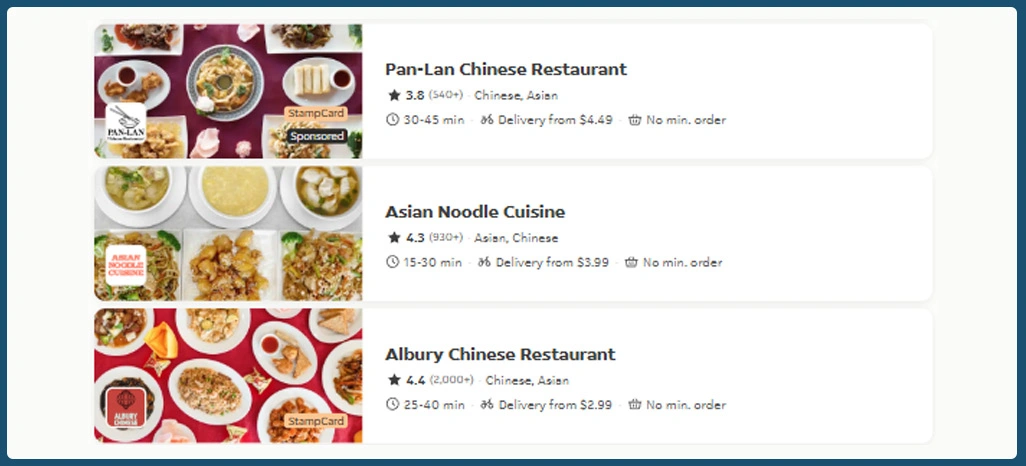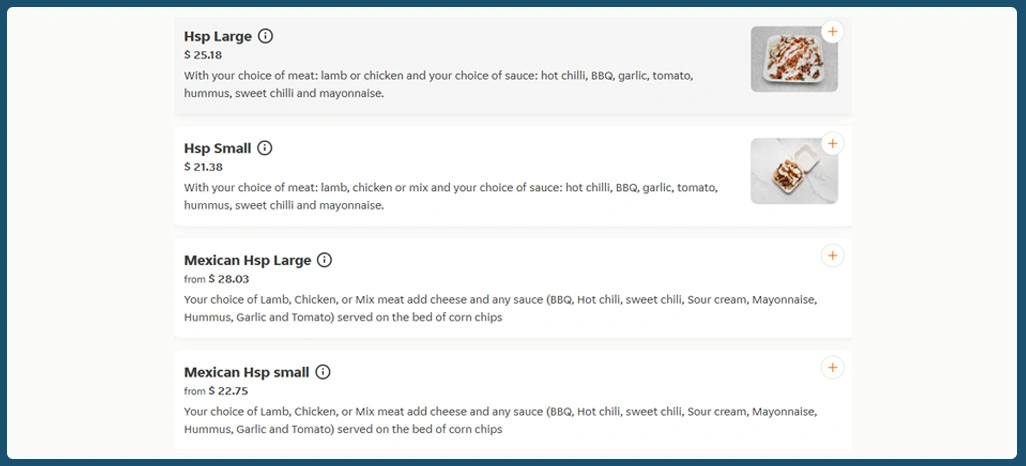How Does Menulog Data Scraping Reveal 85% Accurate Trends in Food Prices and Menus?

Introduction
In today’s highly competitive food delivery market, access to accurate and timely restaurant information can significantly enhance business operations. Leveraging advanced Food Data Scraping techniques allows restaurants, analysts, and food service companies to gather information with precision, providing valuable insights into menus, pricing, and customer preferences. By systematically collecting and analyzing restaurant listings and pricing trends, businesses can make well-informed strategic decisions and stay ahead in a rapidly evolving market.
This approach allows restaurants to benchmark their offerings against competitors and adapt their menus dynamically based on market trends. With access to Menulog Restaurant Listings, businesses can identify popular dishes, seasonal trends, and pricing adjustments that are driving customer demand. Additionally, accurate menu and price information aids in planning promotional strategies, reducing food wastage, and maximizing profitability.
A typical Menulog Data Scraping implementation collects data in real-time, allowing businesses to stay informed about emerging trends and shifts in consumer behavior. By leveraging structured datasets, companies can create actionable reports that reveal insights into customer preferences, monitor competitor pricing strategies, and identify market opportunities effectively.
Advanced Techniques for Efficient Menu Information Extraction

Restaurants today face challenges maintaining accurate menu details while adapting to changing consumer preferences. Implementing Menulog Restaurant Listings collection allows operators to access comprehensive information on dishes, prices, and availability across multiple outlets. This structured data helps businesses analyze trends and identify top-selling items without relying on manual updates.
| Feature | Benefit |
|---|---|
| Real-Time Listings | Accurate updates for menu offerings |
| Multi-Outlet Coverage | Monitor several restaurants simultaneously |
| Automated Collection | Reduce human errors and save time |
Leveraging this data, food operators can better understand market demands, seasonal menu variations, and pricing adjustments that influence customer choices. Accessing detailed restaurant listings enables strategic planning, allowing businesses to highlight high-demand dishes and optimize inventory.
Additionally, accurate Menulog Menu Price Scraping empowers teams to detect pricing inconsistencies and adjust offerings proactively. Marketing and promotions can be designed using insights from competitors’ menus, ensuring better alignment with customer expectations.
Structured datasets also support integration with analytics platforms for deeper insights, allowing predictive modeling for menu adjustments, seasonal offerings, and revenue planning. Operators can analyze dish popularity, evaluate competitor strategies, and forecast potential revenue outcomes.
Leveraging Automated Interfaces to Collect Menu Insights

Collecting large-scale restaurant data manually can be time-consuming and error-prone. Employing a Food Scraping API allows businesses to automate menu data collection, capturing accurate pricing, dish descriptions, and availability across platforms. This ensures that the information is current and actionable.
| Aspect | Advantage |
|---|---|
| Automated Extraction | Reduced errors and manual effort |
| Menu Accuracy | Consistent, reliable data |
| Multi-Platform Coverage | Tracks multiple restaurants efficiently |
Integrating this data with reporting tools helps restaurants analyze pricing trends, dish popularity, and promotional effectiveness. Businesses can use insights to adjust pricing strategies, optimize menu items, and respond to changing consumer demands quickly.
Food Delivery Data Extraction supports forecasting future demand, enabling proactive inventory and staffing management. Historical trends and predictive modeling can guide operational planning, helping restaurants achieve profitability while minimizing waste.
Implementing automated data collection via APIs also improves scalability, as restaurants can track hundreds of outlets in real-time without increasing labor costs. This approach ensures consistency, operational efficiency, and strategic decision-making based on robust, timely information.
Effective Methods to Benchmark Competitor Offerings Accurately

Restaurants must continuously monitor competitors’ menus and prices to stay relevant. Web Scraping provides a method to collect comprehensive competitor data efficiently. This approach captures pricing, dish availability, promotions, and seasonal variations across multiple listings.
| Data Metric | Usage |
|---|---|
| Price Monitoring | Identify competitive pricing trends |
| Menu Changes | Track new and removed items |
| Promotion Analysis | Evaluate discount strategies |
Collected data can be structured into dashboards for easier visualization and interpretation. Operators can identify market gaps, understand consumer behavior, and adjust their offerings to remain competitive. Real-time competitor insights help restaurants optimize menus and plan marketing campaigns with precision.
Integrating Restaurant Price Monitoring Australia data allows operators to benchmark regional pricing differences, monitor dish popularity, and assess market positioning. Historical trends and ongoing updates provide actionable intelligence that supports strategic decision-making.
This method enables quick identification of potential opportunities for menu improvement, pricing adjustments, and operational optimization. Businesses can also forecast seasonal shifts in demand and refine offerings accordingly.
Strategies for Tracking Menu Items Across Multiple Outlets
Monitoring new menu additions and updates is critical for maintaining relevance in the food delivery market. Implementing Real-Time Menu Data Tracking enables businesses to capture changes across multiple outlets, ensuring menus remain accurate and comprehensive.
| Menu Component | Benefit |
|---|---|
| New Dishes | Identify emerging popular items quickly |
| Discontinued Items | Maintain accurate online representation |
| Price Updates | Adjust offerings to reflect market trends |
By integrating these updates with restaurant management systems, operators ensure consistent menu information across platforms. This reduces customer confusion, enhances satisfaction, and supports better operational planning.
Accessing Menulog API Data Collection allows seamless integration of menu updates into internal systems, ensuring a single source of truth for menu information. Real-time insights also facilitate dynamic promotions and informed pricing strategies, tailored to customer preferences and competitor activity.
By leveraging Online Food Delivery Analytics, businesses gain actionable insights that support strategic decision-making, ensuring they maintain a competitive edge. Continuous monitoring not only improves operational efficiency but also elevates overall performance, allowing restaurants to respond proactively to consumer demands and market fluctuations.
Utilizing Comprehensive Datasets for Menu and Pricing Decisions

Structured Food Delivery Menu Datasets allow restaurants to evaluate menu performance, analyze pricing trends, and benchmark offerings against competitors. These datasets provide detailed insights into dishes, pricing patterns, and customer preferences.
| Dataset Element | Application |
|---|---|
| Dish Popularity | Identify high-demand items |
| Price Patterns | Adjust menus for profitability |
| Category Analysis | Understand menu diversification |
Analyzing competitor pricing and menu data allows operators to identify gaps, optimize pricing strategies, and enhance customer satisfaction. Structured datasets also support better marketing campaigns by understanding trending items and regional preferences.
By integrating these insights into management systems, businesses can optimize resource allocation, reduce operational waste, and significantly enhance overall efficiency. Leveraging Restaurant Data Scraping Tools alongside structured datasets provides actionable intelligence, empowering companies to make informed strategic decisions for menu optimization and boosting profitability across their operations.
Optimizing Menu Performance Through Advanced Scraping Solutions

Restaurants seeking to improve revenue and operational efficiency can implement Menu & Pricing Data Scraping Solutions to monitor competitor pricing, promotions, and menu trends. This approach supports data-driven decision-making and helps identify profitable opportunities.
| Feature | Benefit |
|---|---|
| Price Benchmarking | Compare offerings with competitors |
| Promotion Monitoring | Track and analyze discounts |
| Menu Optimization | Adjust dishes based on trends |
Structured insights assist operators in refining pricing strategies, updating menu items, and implementing effective promotions. Continuous monitoring ensures menu information remains accurate and actionable, supporting business growth.
Using Australia Food Delivery Market Insights, restaurants can align their strategies with market trends, forecast demand, and enhance customer satisfaction. Advanced scraping solutions provide a foundation for informed decision-making, allowing businesses to maximize revenue while staying competitive in a dynamic market environment.
How Retail Scrape Can Help You?
Restaurants and food service providers often struggle to gather comprehensive data efficiently. By partnering with us, businesses can utilize Menulog Data Scraping to extract restaurant menus, pricing information, and listings accurately. Our services automate data collection, offering structured datasets ready for analysis.
- Tailored data collection for specific regions.
- Automatic menu and price updates.
- Competitor pricing trend analysis.
- Historical data tracking for forecasting.
- Seamless integration with analytics platforms.
- Support for multiple restaurant chains simultaneously.
By leveraging our platform, operators can access Restaurant Price Monitoring Australia, gaining critical intelligence for decision-making. Whether monitoring competitors, tracking popular dishes, or evaluating promotional campaigns, we deliver actionable insights that enhance market performance.
Conclusion
Utilizing Menulog Data Scraping enables restaurants to capture precise menu and pricing information across multiple listings, helping identify trends and adjust strategies effectively. This technology ensures data accuracy, supports operational efficiency, and enhances decision-making for competitive advantage.
Additionally, implementing Australia Food Delivery Market Insights allows businesses to benchmark against competitors, understand customer preferences, and forecast demand accurately. Partner with Retail Scrape today to elevate your food business strategies.
